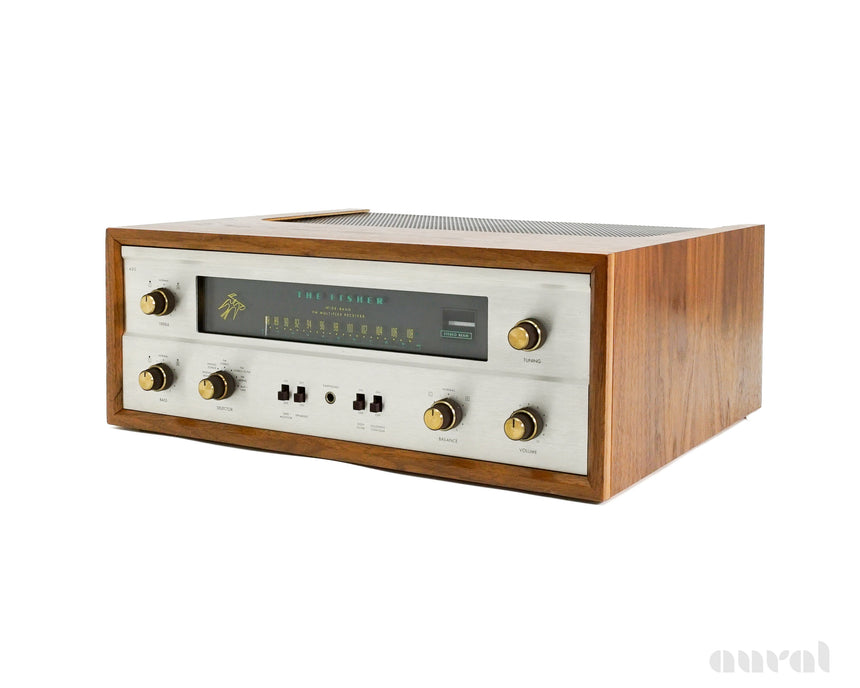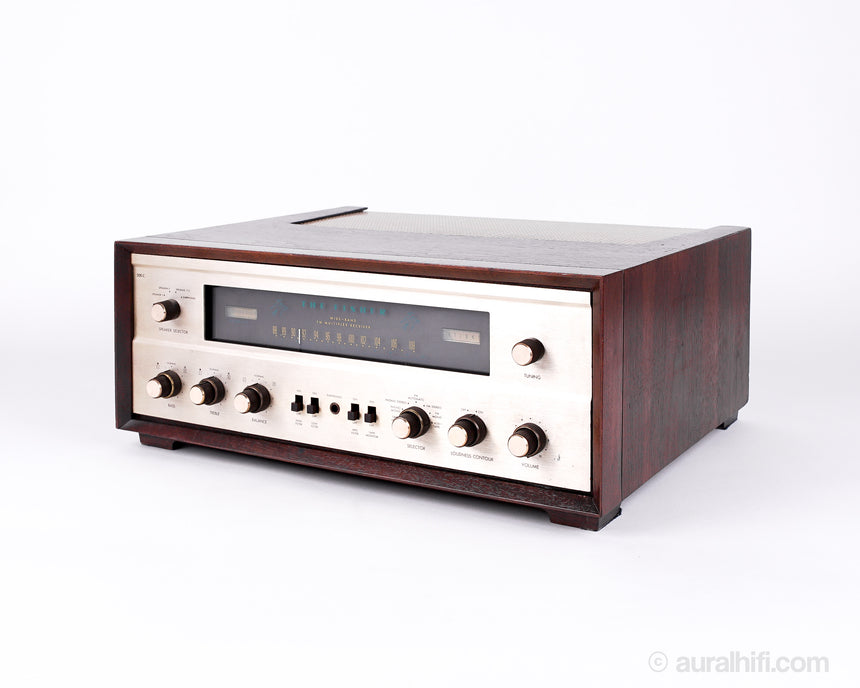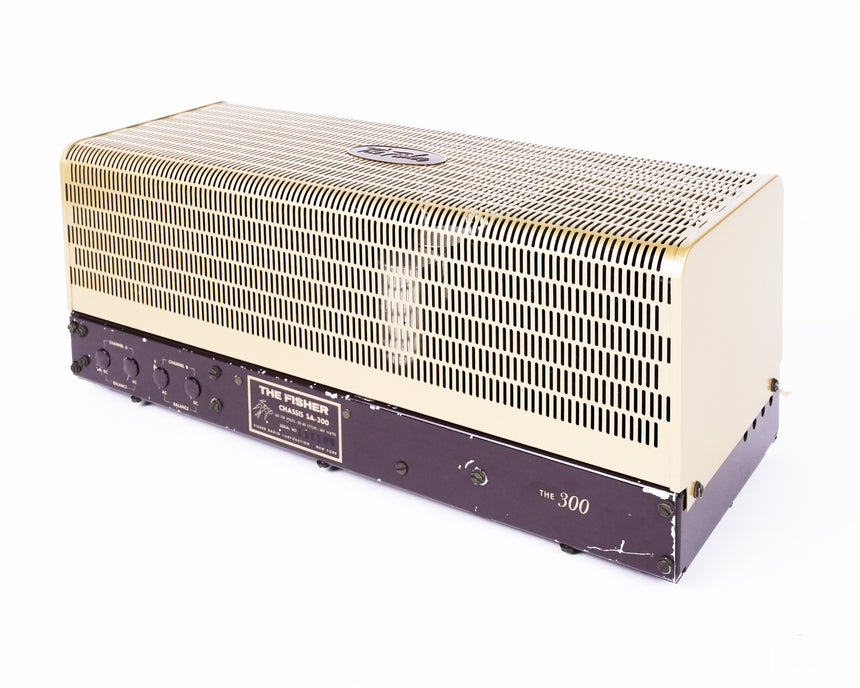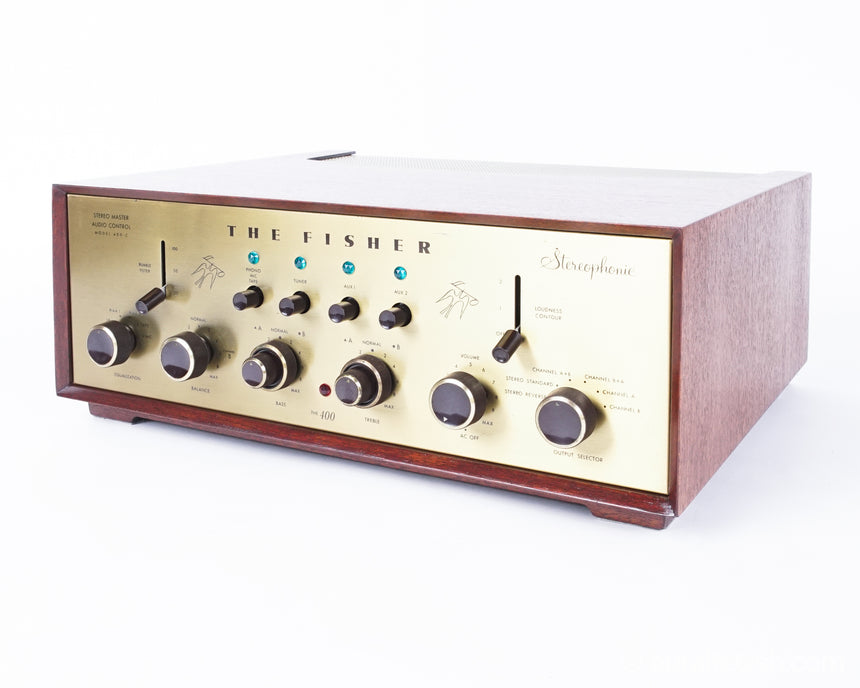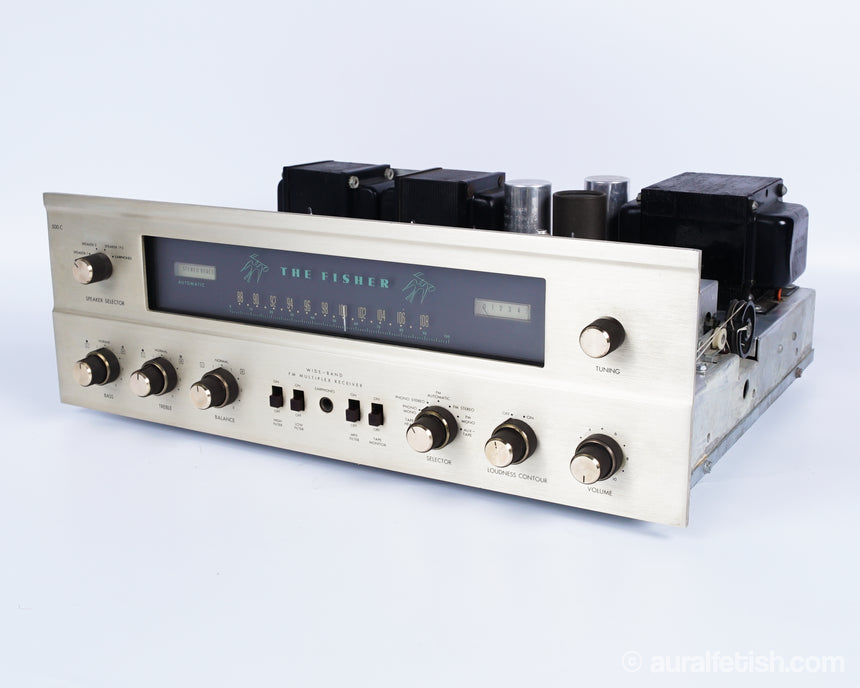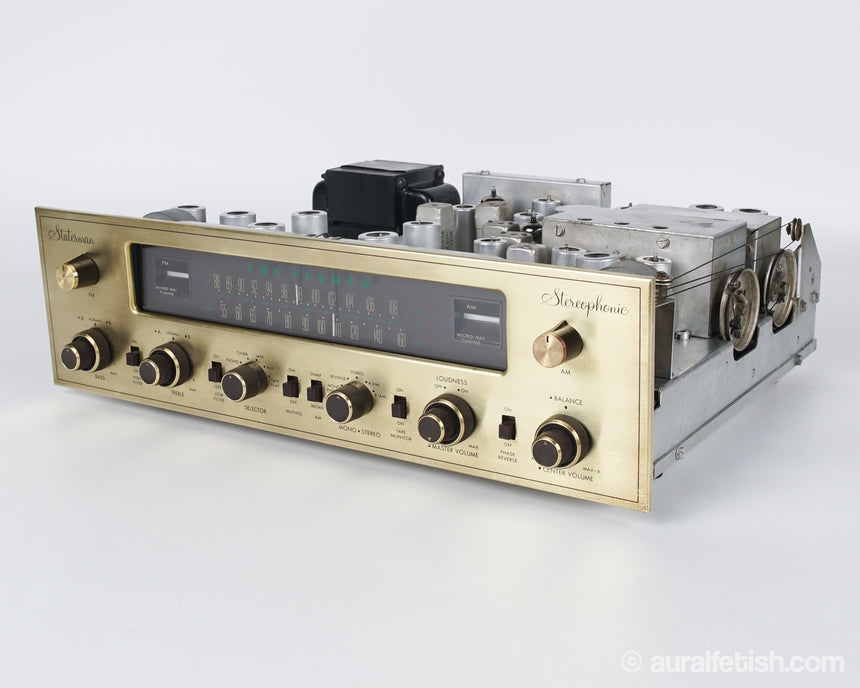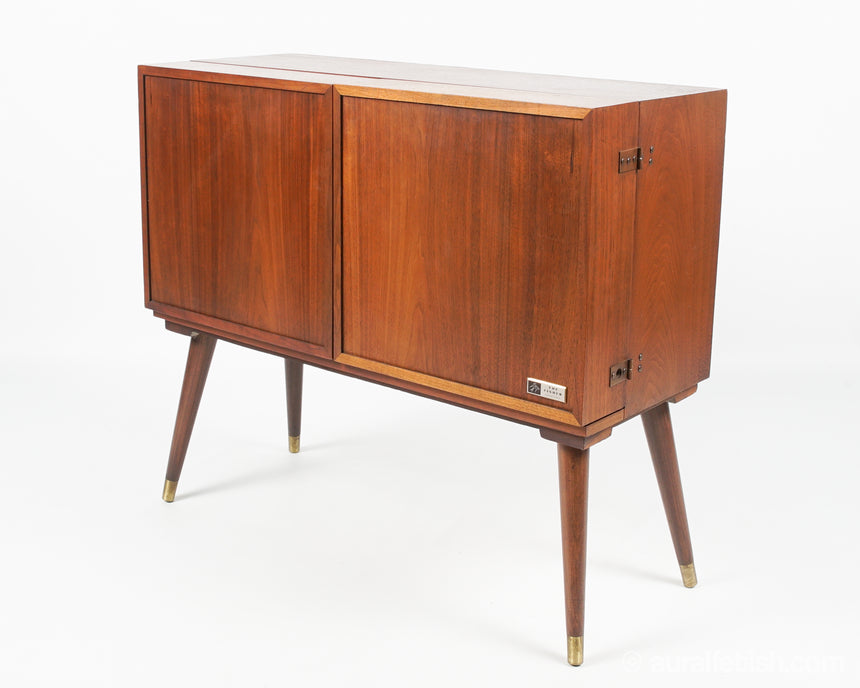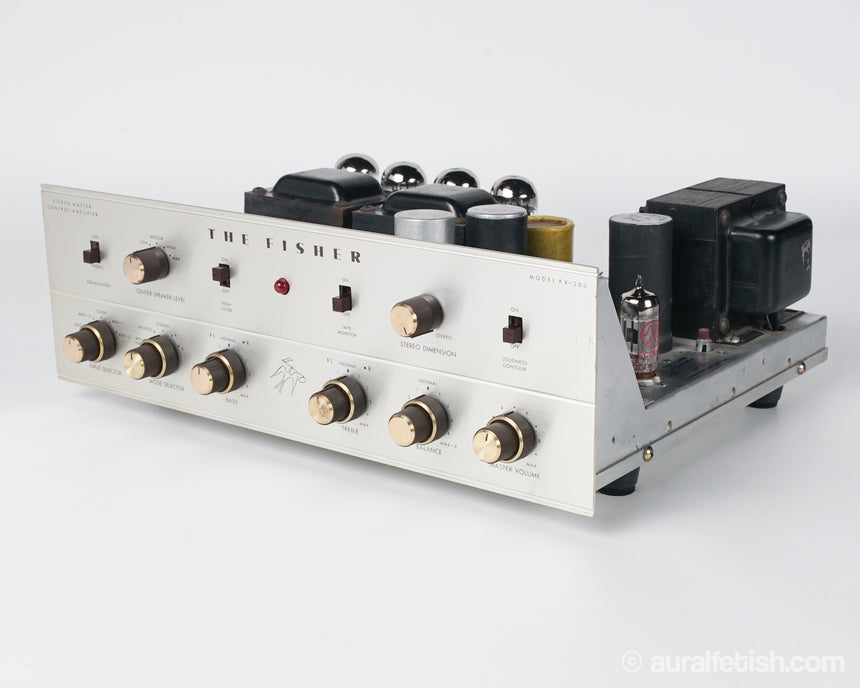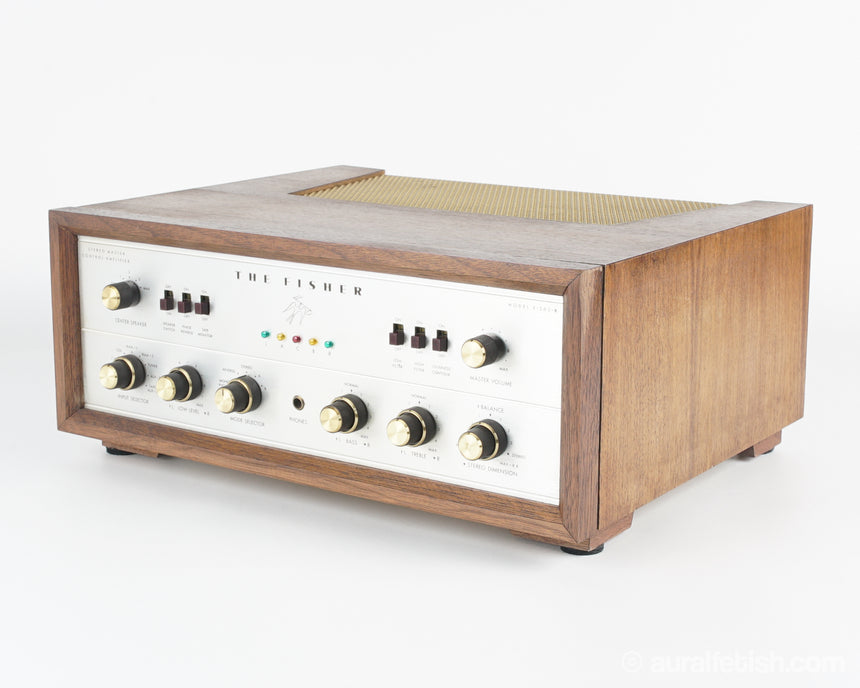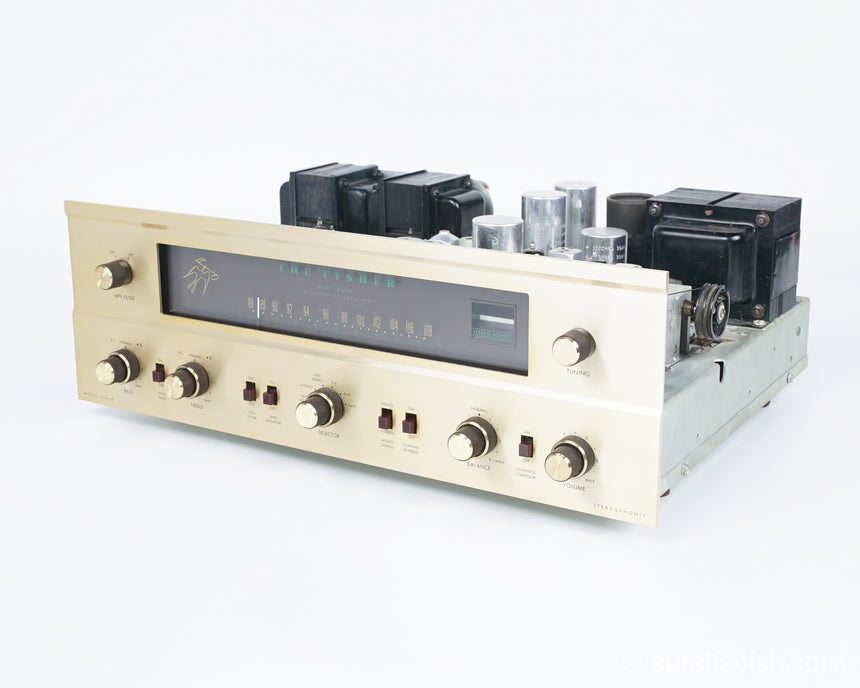The History of Fisher Radio Corporation

Avery Fisher was born in the Yorkville section of Manhattan into a family to whom music was an important part of recreational life. His father, Charles Fisher, a real estate specialist, owned one of the nation's biggest collections of acoustic horn gramophones. The boy Avery was allowed to study the violin as early as he wanted to, which was pretty early. As Fisher grew, so did his proficiency of the violin, often participating as a first or second fiddle at a nearby chamber music concert hall with visiting companies. Despite this musically-bent upbringing, he majored in biology at NYU, then took an entirely different direction for his first profession, a book and typographical designer at Dodd Mead Co, book publishers. Avery became very good at this, designing many successful books, although his desire for music & the ability to electronically reproduce it as accurately as possible got the best of him d us!].
After years of tinkering around with audio circuits in his free time, Avery successfully developed audio equipment capable of outperforming the professional equipment standards of the day. By 1937, his profession (book designing) and avocation (high fidelity) exchanged places, and he founded one of the first audio companies devoted to developing high-quality components for home use, Philharmonic Radio Corporation (PRC).
At PRC, Avery produced components of uncommonly high quality, and his company was quite successful from the get-go. However, with the onset of WWII the entire consumer audio and radio industries came to a halt virtually overnight. Like so many other companies, PRC shifted its production to that of electronic mechanisms for war. At this time, Avery sold his company to a big corporation, although he continued to direct it through the duration of hostilities. Despite the many horrors the war brought to the world, one of the positive things it contributed was the technical knowledge gained from six years of wartime laboratory research.
After the war ended in 1945, Avery refocused his attention back to music. Armed with his newfound expertise, and a hand picked design team of the brightest engineers of Europe, he incorporated his second company, the Fisher Radio Corporation. Out of a small shop in New York City, Avery Fisher sold custom-made High-Fidelity equipment long before most people knew what that phrase meant. He revolutionized audio circuitry, inventing much of the technology that is widely used today. As word-of-mouth grew, so did Fisher's fame, eventually his equipment became known as the "Rolls Royce" of the audio industry. He compiled a long list of noble clientele, including heads of state, celebrities, and accomplished musicians. Throughout the 40's, 50's and 60's, if one wanted the finest in audio, The Fisher was the brand of choice.
The company had changed hands several times over the years. In February 1969, Emerson Electric announced plans to purchase Fisher Radio, initially offering to exchange 736,000 shares in a transaction worth approximately $75 million. Emerson later amended the amount, and agreed to pay approximately $37 million in stock to acquire Fisher. The purchase was completed later that month, on February 22nd. Coincidentally, around the same time of the 1969 acquisition, a trademark request was granted to market the company as simply "Fisher," dropping the "The" from the name. Many people conflate the acquisition with the change in branding, but the trademark request was actually filed by Mr. Fisher in 1965, and held up by other concerns who felt they had the right to use the "Fisher" name. The timing was a happy accident for collectors, who could then discern the age of a piece just from the branding on the faceplate.
Emerson subsequently sold Fisher to Sanyo Electric of Japan in 1975. In 2000, Fisher's entire product lineup was re-branded as Sanyo. Upon the acquisition of Sanyo by Panasonic in 2011, Sanyo's product lineup was, in turn, re-branded as Panasonic. Avery Fisher remained as a consultant for Emerson and Sanyo, until his passing in 1994.


